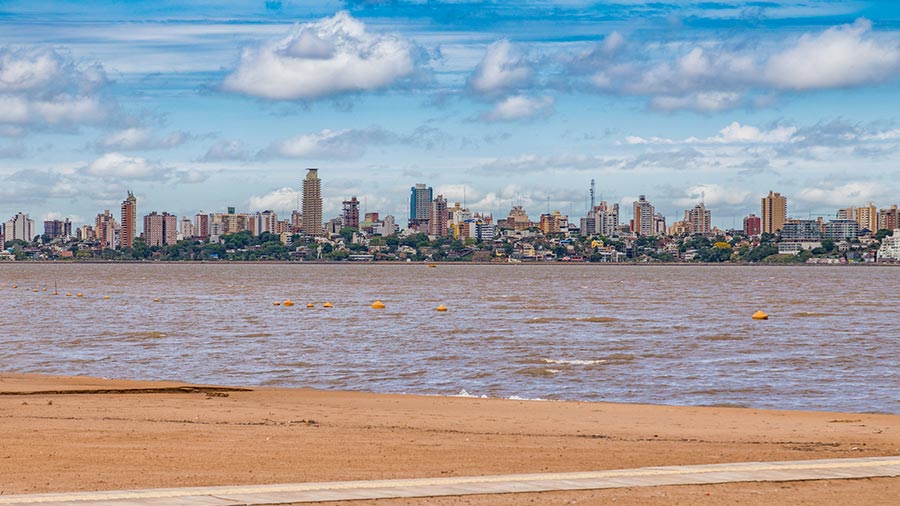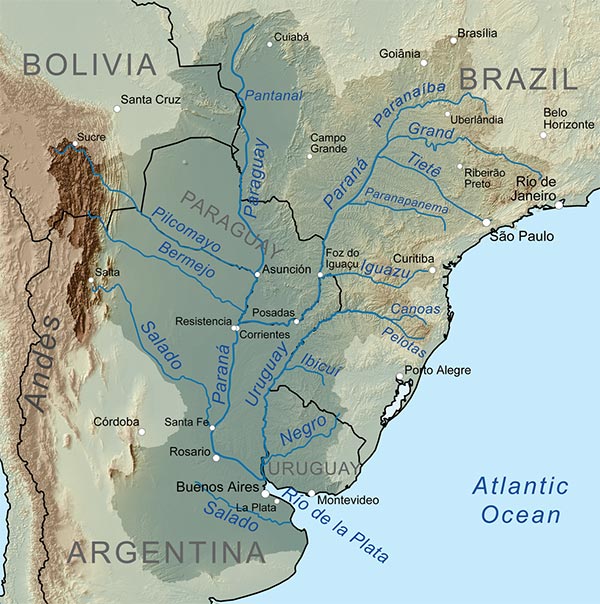China Eyes BRI Projects In Argentina To Secure Soy & Wheat Imports

The Parana River running past Posadas City, Misones, Argentina
China has 20% of the world’s population, yet just 5% of the available arable land, a dynamic that is dictating part of the Belt and Road Initiative is to secure and better access food supplies. It is Latin America’s Argentina that is the largest exporter of soya and wheat to China, and this is impacting BRI projects there.
This is especially true when it comes to the Parana River, Argentina’s largest, with a total length in Argentina of 1,200 km, winding through the fertile delta. The river is Latin America’s second largest after the Amazon and also flows through Brazil, Bolivia, Paraguay with some tributaries joining it from Uruguay. In total it runs for 4,480 km.

To improve access, and increase soy and wheat production, the Argentinian government wants to dredge its section of the Parana and further develop river ports and loading bays along the length of the river course. Currently, Argentina has 25 inland loading facilities along the Parana.
Argentinian grain exports are now largely in the hands of China’s COSCO, which through the acquisition of and Nobel Agri and Nidera is now the dominant player. COSCO are a major exporter of Argentinian corn, sugar, grains and other agricultural products.
Upgrading and maintaining the Parana river is key to this – yet recent lower rainfall volumes have affected the type of ships that can use it. As about 80% of the total 120 million tonnes of these products are exported from the main Parana River Port of Rosario, whoever has the concession to dredge and maintain the river has specific responsibilities. That concession has come up for renewal, with Shanghai Dredging one of the competing parties. The contract is for Parana River management for 15 years. Shanghai Dredging are a subsidiary of Chinese State SOE China Communication Construction. The contract requires the operator to dredge the river, provide navigation aids, insert buoys and collect toll charges on behalf of the Government.
As mentioned previously in my article about China’s Belt & Road Initiative moving to cash flow driven services, the Parana River project provides an ideal example of how the nature of BRI work is increasingly becoming involved in services and cashflow. Argentina is not a member of the Belt and Road Initiative and thus far few Latin American countries have signed up to it. That hasn’t stopped Chinese investment and bidding for available projects however and with Beijing also turning its attention to secured food and agricultural supplies we can expect to see increasing participation by Chinese SOEs and other companies in the Latin American region.
Related Reading
About Us
Silk Road Briefing is written by Dezan Shira & Associates. The firm has 28 offices throughout Asia, and assists foreign investors into the region. For strategic advisory and business intelligence issues please contact the firm at silkroad@dezshira.com or visit www.dezshira.com





